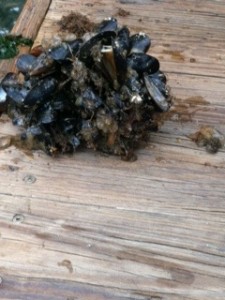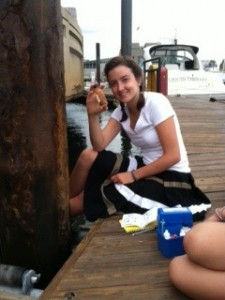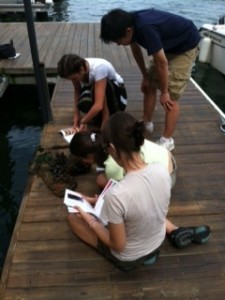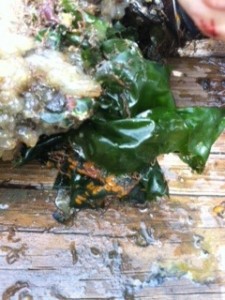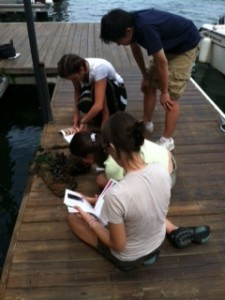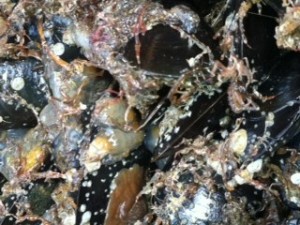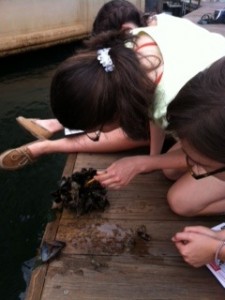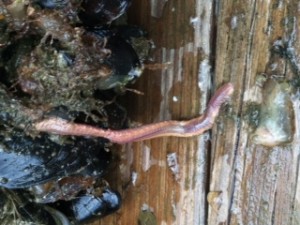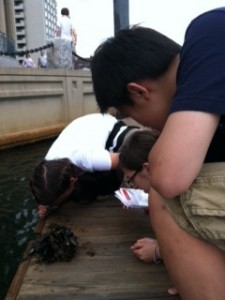After our informative tour of the AUV Lab, we got started on a couple of mini research projects. For the rest of the day each of us learned about either biodiversity and its various indices and methods of calculation, or the various zones of the intertidal, the variety of invasive species and their effects, or the history and conservation of the Boston Harbor. We presented our findings to the rest of the group the morning after a short and hectic 4th of July hiatus from Sea Grant. Following our presentations and an early lunch we went down to the harbor to look at some plates an MIT Sea Grant member had used for his Master’s. As we pulled out the first plate we were astonished by a writhing mass of sea life.
As we looked closer we found 16 species in the two plates we pulled up only a couple of meters apart. These included the predictable mussel Mytilus edulis, the barnacle Balanus balanoides, and the sea squirt Ciona intestinalis, commonly known as a sea vase. We were surprised to see hundreds of the invasive skeleton shrimp Caprella mutica, which gave the impression that the entire plate was writhing. After we had our fill of writhing shrimp and tunicates we pushed the plate back into the water and tested the water for dissolved oxygen, (using both a probe and a winkle test!) salinity, (using a hydrometer, the probe and a refractometer!), pH and temperature. After we had recorded our data we packed up and headed home.

